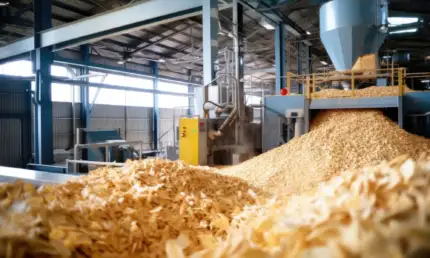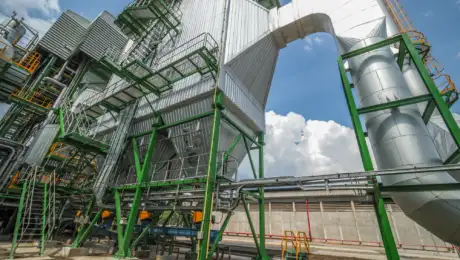
Understand the impact and behaviour of combustible dust explosions
The explosion pressure development test is used to evaluate and measure the pressure generated during an explosion of combustible dust.
This test is particularly relevant in industries where there is a risk of dust explosions, such as those handling fine powders, grains, or other combustible materials.
The goal of the test is to assess the potential force and impact of an explosion, providing crucial information for developing and optimising safety measures to protect personnel, equipment, and facilities from the risks associated with dust explosions in industrial environments.

Method
This test is performed based on EN 14034-1:2004+A1:2011: “Determination of explosion characteristics of dust clouds – Part 1: Determination of the maximum explosion pressure Pmax of dust clouds” and EN 14034-2:2006+A1:2011: “Determination of explosion characteristics of dust clouds ‒ Part 2: Determination of the maximum rate explosion pressure rise (dP/dt)-max of dust clouds.
We disperse varying quantities of the dust sample within a 20-litre explosion apparatus and ignite using a robust ignition source (10 kJ). This process allows us to ascertain the pressure-time history within the vessel for different dust-air concentrations.
We subsequently analyse the pressure-time histories to extract key parameters, including Pmax (maximum explosion pressure), dP/dtmax (maximum rate of pressure rise), and KSt value.
FAQs
-
1What is the primary objective of the Explosion Pressure Development Test?
The primary objective of the Explosion Pressure Development Test is to evaluate and measure the pressure generated during an explosion of combustible dust or gases, providing essential data for understanding explosion dynamics and designing safety measures.
-
2Why is the Explosion Pressure Development Test important in industrial settings?
In industrial environments where combustible materials are handled, the test is crucial for assessing the potential force and impact of explosions. It helps in designing safety measures and structures to mitigate the risks associated with dust or gas explosions.
-
3What specific parameters are determined through the analysis of pressure-time histories in this test?
The analysis of pressure-time histories yields key parameters, including Pmax (maximum explosion pressure), dP/dtmax (maximum rate of pressure rise), and KSt value. These parameters are essential for characterising the nature and severity of an explosion.
-
4How does the Explosion Pressure Development Test contribute to safety compliance and risk management?
The test results provide valuable insights into the potential hazards posed by combustible materials. This information is instrumental in ensuring compliance with safety standards, designing effective safety measures, and managing risks associated with dust or gas explosions in industrial settings.





